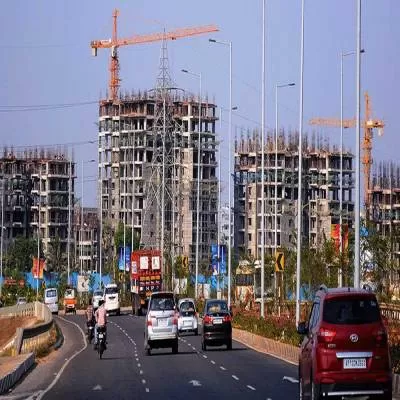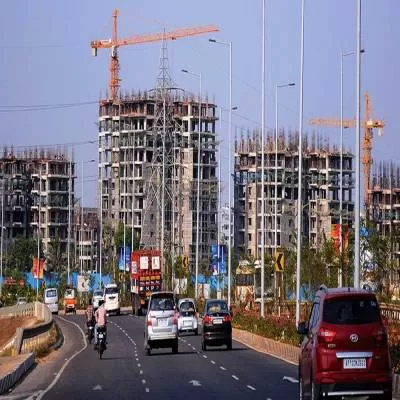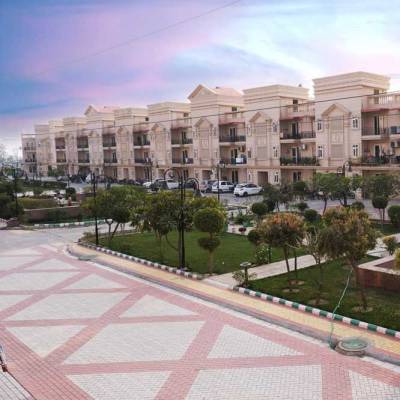- Home
- Real Estate
- Indian real estate attracts only 1 per cent of global capital inflows. Here’s why!

Indian real estate attracts only 1 per cent of global capital inflows. Here’s why!
It makes for a telling revelation that considering the 11,500 developers under the CREDAI (Confederation of Real Estate Developers’ Associations of India) umbrella, the number of developers who have consistently delivered projects across all three phases of the Indian residential real estate* cycle over a 11-year period stands at a measly 124.

In percentage terms, it comes to just 1 per cent and starkly exposes the lack of depth in India’s realty market. These stats also reinforce the justification behind recent policy-level interventions such as RERA [Real Estate (Regulation & Development)] and demonetisation. The sector definitely needs a shot of corporate governance and better industry practices.
A vibrant real estate industry with greater degree of transparency will bode well for future fund flows. On the back of higher transparency and corporate governance, many more developers will be able to attract private equity funding. Not only will this turnaround show the confidence in our real estate industry but will also help developers tide over the liquidity crisis seen in recent years.
Out of the global capital inflows into real estate of more than US$ 610 billion in 2016, India’s realty got a measly sum of ~US$ 6.6 billion. This comes to 1 per cent and is due to the lack of depth in India’s real estate industry as also its highly-fragmented nature. PE funds have had to struggle with finding the right partners, and in recent times, their focus has changed to quality of partners instead of IRR (Internal Rate of Return).
Only a few developers in India have been able to attract private equity over the years. In order to attract investments, developers need to have high levels of integrity, quality of assets, appropriate capital structure, experienced management teams, high levels of corporate governance and better financial and budgetary controls.
The table below illustrates how a majority of today’s developers entered the business, 2012 onwards. Many others have been in this business for barely a decade. The market conditions are challenging for many, especially those with a poor track record. A lack of fiscal prudence, over-indulgence in land-banking and a lower degree of customer need analysis with the associated failure to fulfil promises by some developers has dealt a blow to the entire industry’s credibility and caused a wider trust deficit between them and buyers.

Going forward, however, increased consolidation and transparency is expected to boost foreign and domestic investor participation like never before. This will be a win-win situation for the developer community as well as PE funds. The industry, then, would be able to get a higher share of the global capital inflows, which bodes well for its future.
The developer community, on its part, would have to invest in building brands, forge partnerships and set up full-fledged teams to manage investor relationships. The stock exchange-listed players should also maintain the highest ethical standards while trading in their own stock, deciding on compensation structure for directors, reducing outstanding litigations and retention of key management personnel.
*The three phases witnessed by Indian real estate sector
India’s property market growth cycle can be divided into three phases: The rapid growth witnessed from 2005 to 2008; the post-GFC (global financial crisis) period between 2009 and 2011, and the current phase of plateaued growth starting from the year 2012.
About the Author:
Ramesh Nair is COO-Business & International Director, JLL India.
Out of the more than US$ 610 billion global capital inflows into real estate seen in 2016, India got a measly sum of ~US$ 6.6 billion or 1 per cent; lack of industry depth to blame It makes for a telling revelation that considering the 11,500 developers under the CREDAI (Confederation of Real Estate Developers’ Associations of India) umbrella, the number of developers who have consistently delivered projects across all three phases of the Indian residential real estate* cycle over a 11-year period stands at a measly 124. In percentage terms, it comes to just 1 per cent and starkly exposes the lack of depth in India’s realty market. These stats also reinforce the justification behind recent policy-level interventions such as RERA [Real Estate (Regulation & Development)] and demonetisation. The sector definitely needs a shot of corporate governance and better industry practices. A vibrant real estate industry with greater degree of transparency will bode well for future fund flows. On the back of higher transparency and corporate governance, many more developers will be able to attract private equity funding. Not only will this turnaround show the confidence in our real estate industry but will also help developers tide over the liquidity crisis seen in recent years. Out of the global capital inflows into real estate of more than US$ 610 billion in 2016, India’s realty got a measly sum of ~US$ 6.6 billion. This comes to 1 per cent and is due to the lack of depth in India’s real estate industry as also its highly-fragmented nature. PE funds have had to struggle with finding the right partners, and in recent times, their focus has changed to quality of partners instead of IRR (Internal Rate of Return). Only a few developers in India have been able to attract private equity over the years. In order to attract investments, developers need to have high levels of integrity, quality of assets, appropriate capital structure, experienced management teams, high levels of corporate governance and better financial and budgetary controls. The table below illustrates how a majority of today’s developers entered the business, 2012 onwards. Many others have been in this business for barely a decade. The market conditions are challenging for many, especially those with a poor track record. A lack of fiscal prudence, over-indulgence in land-banking and a lower degree of customer need analysis with the associated failure to fulfil promises by some developers has dealt a blow to the entire industry’s credibility and caused a wider trust deficit between them and buyers. Going forward, however, increased consolidation and transparency is expected to boost foreign and domestic investor participation like never before. This will be a win-win situation for the developer community as well as PE funds. The industry, then, would be able to get a higher share of the global capital inflows, which bodes well for its future. The developer community, on its part, would have to invest in building brands, forge partnerships and set up full-fledged teams to manage investor relationships. The stock exchange-listed players should also maintain the highest ethical standards while trading in their own stock, deciding on compensation structure for directors, reducing outstanding litigations and retention of key management personnel. *The three phases witnessed by Indian real estate sector India’s property market growth cycle can be divided into three phases: The rapid growth witnessed from 2005 to 2008; the post-GFC (global financial crisis) period between 2009 and 2011, and the current phase of plateaued growth starting from the year 2012. About the Author: Ramesh Nair is COO-Business & International Director, JLL India.
























